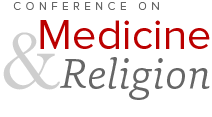Postemotional Medicine
Stjepan Mestrovic, Ph.D., Professor, Texas A&M University
Ronald Lorenzo, Ph.D., Adjunct Instructor, Prairie View A&M University
In Postemotional Society (Sage, 1997), Mestrovic draws upon Max Weber’s depiction of modernity as a continual moving from enchantment into disenchantment to depict a postemotional and fake ‘re-enchantment’ of the world. Postemotional involves the social and systemic rationalization , control, and conceptualization of organic and bodily perceptions. We extend and apply postemotional theory to the institution of medicine, and illustrate this phenomenon with societal trends. The face-to-face contact of the past in which doctor and patient developed a relationship has been replaced with assembly-line like visits to clinics in which patients and doctors interact as if they were in a McDonald’s restaurant: efficiency, predictability, and control are key elements of the interaction. The contemporary physician does not perceive the patient and his or her symptoms as much as the physician conceptualizes the patient through the conceptual prisms of various tests, electronic gadgets, monitors, and pre-ordained conceptual schemata. Patients increasingly turn to online and virtual physician and nursing care. Finally, the business model has invaded and taken over the traditional medical model. Instead of the physician experiencing a sort of ‘parenting instinct’ (from Thorstein Veblen) and caring for the patient, the physician is constrained by insurance guidance and pecuniary concerns in delivering postemotional ‘care’ to the patient. The result is Max Weber’s ‘iron cage’ in the field of medicine in which both doctor and patient are trapped.
Ronald Lorenzo, Ph.D., Adjunct Instructor, Prairie View A&M University
In Postemotional Society (Sage, 1997), Mestrovic draws upon Max Weber’s depiction of modernity as a continual moving from enchantment into disenchantment to depict a postemotional and fake ‘re-enchantment’ of the world. Postemotional involves the social and systemic rationalization , control, and conceptualization of organic and bodily perceptions. We extend and apply postemotional theory to the institution of medicine, and illustrate this phenomenon with societal trends. The face-to-face contact of the past in which doctor and patient developed a relationship has been replaced with assembly-line like visits to clinics in which patients and doctors interact as if they were in a McDonald’s restaurant: efficiency, predictability, and control are key elements of the interaction. The contemporary physician does not perceive the patient and his or her symptoms as much as the physician conceptualizes the patient through the conceptual prisms of various tests, electronic gadgets, monitors, and pre-ordained conceptual schemata. Patients increasingly turn to online and virtual physician and nursing care. Finally, the business model has invaded and taken over the traditional medical model. Instead of the physician experiencing a sort of ‘parenting instinct’ (from Thorstein Veblen) and caring for the patient, the physician is constrained by insurance guidance and pecuniary concerns in delivering postemotional ‘care’ to the patient. The result is Max Weber’s ‘iron cage’ in the field of medicine in which both doctor and patient are trapped.
